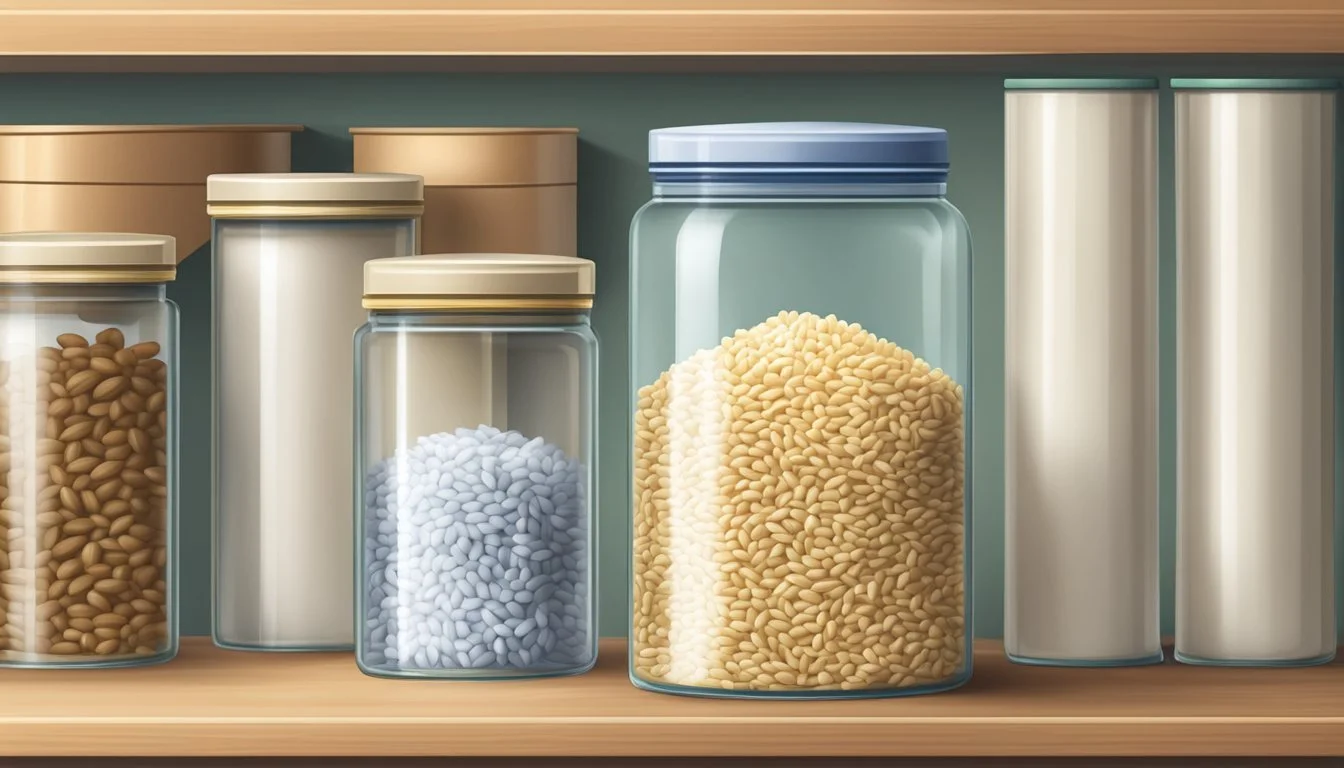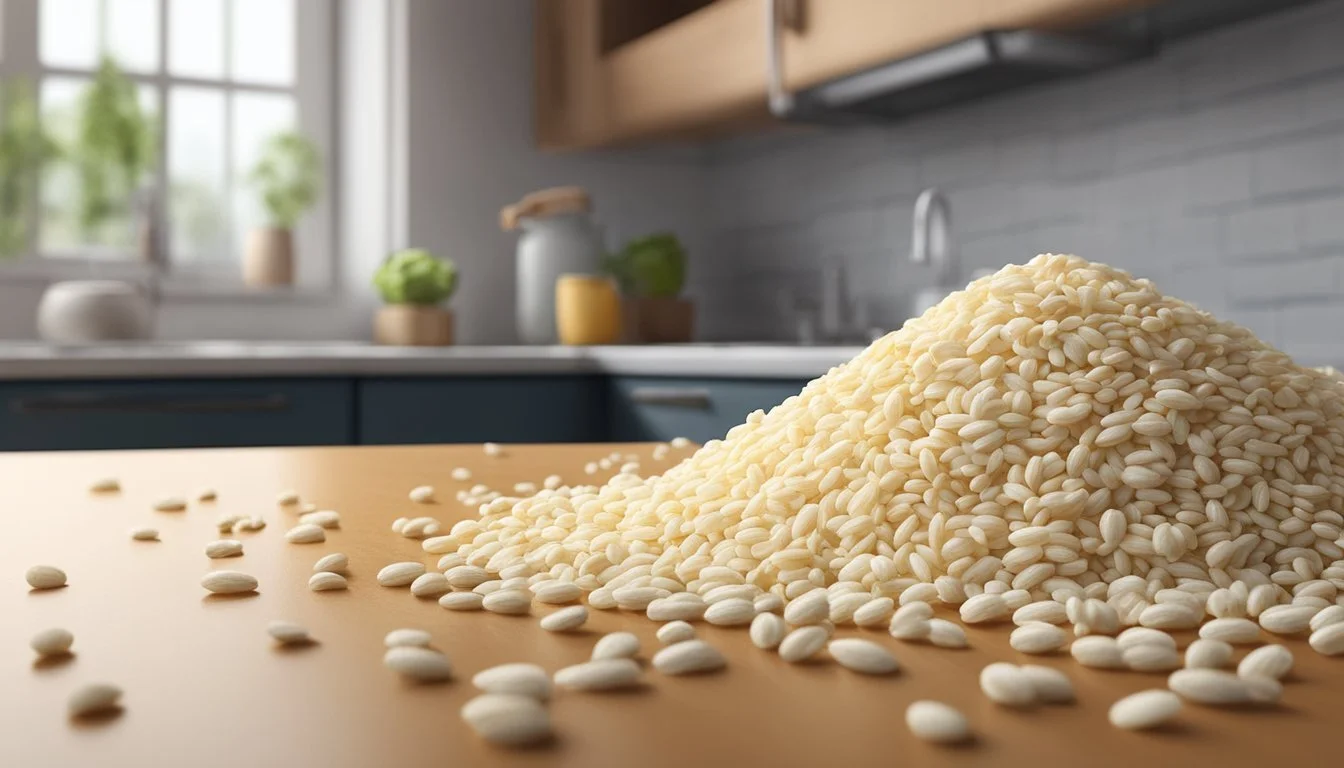How Long Does Puffed Rice Last?
Shelf Life and Storage Tips
Puffed rice (What wine goes well with rice?), a popular snack and cereal ingredient, offers a lighter, airy alternative to traditional rice grains. Its extended shelf life compared to cooked rice makes it a convenient pantry staple. The longevity of puffed rice is linked to its low moisture content, which inhibits the growth of microorganisms that typically lead to spoilage. Under ideal storage conditions, puffed rice can retain its quality for months, although it does not have an indefinite shelf life.
Storage conditions play a crucial role in preserving the crispness and freshness of puffed rice. To maintain its desired texture and taste, puffed rice should be kept in a cool, dry place away from moisture and heat. Additionally, airtight containers are recommended to prevent the ingress of air and humidity, which can lead to staleness. In such a suitable environment, puffed rice can be expected to remain consumable well beyond the date it was produced, so long as it is kept unexposed to compromising factors.
External variables such as the location, climate, and seasons can further influence the actual shelf life of puffed rice. It is important to regularly check for signs of spoilage, such as off odors or a change in texture, as these indicators can signal that the puffed rice is no longer at its optimal quality. Consumers must pay attention to these details to ensure they enjoy puffed rice at its best and derive the most satisfaction from this versatile food product.
Understanding Puffed Rice
Puffed rice is a versatile ingredient and a popular snack, known for its light, airy texture and ability to integrate into various dishes.
Types of Rice
White Rice: Includes long-grain like Basmati and Jasmine, often used for puffed rice due to their neutral flavor.
Brown Rice: Known for a nuttier taste and additional fiber, brown rice can also be puffed but retains a chewier texture.
Specialty Varieties: Sushi (What wine goes well with sushi?) rice, Arborio, and wild rice (how long does wild rice last?) have distinctive characteristics but are less common in puffed rice production.
Rice Type Characteristic Common in Puffing White Rice Neutral flavor, versatile Yes Brown Rice Nuttier flavor, chewier texture Less common Basmati Rice Fragrant, long-grain Occasionally Jasmine Rice Aromatic, long-grain Occasionally Wild Rice Strong, nutty flavor Seldom Sushi Rice Sticky, short-grain Rarely Arborio Rice Creamy, sticky texture Rarely
Basic Characteristics of Puffed Rice
Texture and Flavor: Puffed rice exhibits a crispy texture and a subtle, toasty flavor which can complement both sweet and savory preparations.
Processing: It is created by pre-gelatinizing rice grains, which are then expanded rapidly by the application of heat, turning into light and airy puffs.
By understanding the types of rice and the basic characteristics of puffed rice, consumers and chefs can better appreciate its role as a pantry staple and its application in various culinary contexts.
Shelf Life of Puffed Rice
The longevity of puffed rice relies heavily on storage conditions and whether the rice is cooked or uncooked. Proper storage can significantly extend its usability.
Factors Affecting Shelf Life
Several factors influence the shelf life of puffed rice. Key considerations include:
Temperature: Storing puffed rice in a cool, dry place is crucial. Excessive heat can accelerate spoilage.
Moisture: Puffed rice is particularly susceptible to moisture. Any dampness can lead to mold growth or staleness.
Air and Light: Minimizing exposure to air and light reduces the risk of oxidative rancidity.
Storage Method: An airtight container is essential to prevent contamination and maintain freshness.
Using the following table, one can understand how these factors contribute to the preservation of puffed rice:
Factor Consideration for Puffed Rice Temperature Best kept at room temperature away from heat sources. Moisture Store in a dry environment; avoid humidity. Air and Light Keep in sealed containers or opaque packaging to minimize exposure. Storage Method Use airtight containers, resealable bags, or vacuum sealing for optimal longevity.
Uncooked Rice Vs. Cooked Rice
Uncooked Puffed Rice
Pantry: When unopened and stored in the pantry, uncooked puffed rice can last up to 6-12 months after the expiration or use-by date on the packaging. After opening, it should be consumed within a couple of months for best quality.
Fridge: Not typically recommended, as it may introduce moisture and alter texture.
Freezer: Freezing is not necessary and could introduce unwanted moisture upon thawing.
Cooked Puffed Rice
Room Temperature: Cooked puffed rice should not be left out for more than 2 hours due to the risk of bacterial growth.
Fridge: It can be stored in the fridge for 4 to 6 days if kept in an airtight container.
Freezer: In a freezer, cooked puffed rice can maintain its best quality for up to 6 months, but it is safe to consume beyond that time as long as it has been kept constantly frozen at 0° F.
Optimal Storage Conditions
Proper storage is essential to maintain the quality and extend the lifespan of puffed rice, whether it is uncooked or cooked. Key factors include controlling temperature, moisture, and oxygen exposure.
Storing Uncooked Puffed Rice
Uncooked puffed rice should be kept in an airtight container to protect it from moisture and pests. Ideally, it should be stored at room temperature, away from direct sunlight and heat sources. Exposure to oxygen can make puffed rice stale, so containers that remove excess air are beneficial.
Storing Cooked Puffed Rice
Once cooked, puffed rice must be handled differently to ensure freshness. It should be stored in the refrigerator within two hours of cooking to prevent bacterial growth. Using an airtight container is also advised for refrigerated puffed rice. Cooked puffed rice can last in the refrigerator for up to 4-6 days. Freezing is an option for longer storage, and it can be retained in a freezer for up to one month when stored properly in freezer-safe containers or bags.
Signs of Puffed Rice Spoilage
Puffed rice, just like any other food product, exhibits distinct spoilage signs when it is no longer safe for consumption. It's crucial for consumers to recognize these indicators to avoid foodborne illness.
Visual and Textural Changes
One should look for noticeable shifts in the puffed rice's appearance and texture. Visual clues include:
Mold Presence: Mold can appear in a variety of colors as fuzzy spots.
Texture Alteration: Fresh puffed rice should be crisp; a stale, slimy, or oily texture suggests degradation.
Insect Infestation: Any signs of bugs or larvae indicate contamination and spoilage.
Odor and Taste Alterations
Puffed rice that is going bad may exhibit changes in its smell and flavor profile:
Unpleasant Smell: An off or rancid odor is a strong indicator the puffed rice is spoiled.
Flavor Change: A distinct or sour taste in puffed rice that was previously neutral or sweet can signal spoilage.
Health Risks of Spoiled Rice
Spoiled rice poses serious health risks if consumed, primarily due to bacteria and potential contaminants. Understanding these dangers is crucial for safe consumption.
Bacteria and Food Poisoning
Spoiled puffed rice can harbor harmful bacteria such as Bacillus cereus, which thrives in improperly stored rice products. Consumption of rice contaminated with this bacterium can lead to food poisoning, manifesting symptoms like vomiting, diarrhea, and abdominal cramps. The USDA emphasizes the importance of proper food handling and storage to prevent bacterial growth.
Symptoms: May appear 1-5 hours after consumption
Prevention: Proper storage and reheating
Mycotoxins and Other Contaminants
In addition to bacteria, spoiled rice can contain mycotoxins, toxic substances produced by molds. These contaminants can compromise an individual's health, leading to a variety of symptoms upon ingestion.
Risks: Mycotoxins can cause acute and chronic symptoms based on exposure levels.
Detection: Look for visual signs of mold, such as discolorations or fuzzy growths, as well as any off-odors.
Consumers are advised to inspect puffed rice frequently and discard any product that shows signs of spoilage to prevent health risks.
Extending Shelf Life and Proper Usage
Proper storage and handling are key to maximizing the shelf life of puffed rice, which lacks moisture and is more prone to becoming stale. Below are targeted strategies for keeping puffed rice fresh and safe for consumption.
Using Freezing to Preserve Rice
Freezing puffed rice can extend its shelf life significantly. To do this effectively:
Place puffed rice in an airtight container or sealable freezer bag.
Remove as much air as possible before sealing to prevent freezer burn.
Label the container with the freezing date.
Frozen puffed rice can last for several months, maintaining quality if kept at a consistent freezing temperature.
Managing Leftovers Safely
When dealing with leftovers, reheating should be done carefully:
Store puffed rice leftovers in the refrigerator within two hours of cooking to avoid bacterial growth.
Use airtight containers to maintain freshness.
Consume refrigerated leftovers within four to six days.
For reheating, ensure the puffed rice is heated to 165°F or until hot and steamy to kill any potential bacteria.
When to Discard Rice
It's important to know when puffed rice is no longer safe to eat:
Inspect visually and smell the puffed rice; discard if there is mold or an off odor.
Past the use-by date, the quality may diminish even if it's not spoiled.
If puffed rice has been stored at room temperature for an extended period, particularly in high humidity, it's safer to discard it.
Following these guidelines will help ensure that puffed rice is used safely and within its best quality range.
Frequently Asked Questions
Navigating through the specifics of puffed rice's shelf life ensures safe consumption and maintains its intended flavor profile. Here are answers to some common questions about puffed rice's expiration and quality check.
Can Puffed Rice Be Eaten Past Its Expiration?
Expired rice, including puffed rice, can sometimes be consumed past its printed expiration date, provided it has been stored properly and shows no signs of spoilage. It is crucial, however, to inspect the puffed rice for any changes in flavor, smell, or texture. If the rice is stale but not moldy or off-smelling, it may simply lack freshness and could be less enjoyable to eat.
How to Identify If Puffed Rice Is Still Good?
One can determine if puffed rice is still consumable by examining its:
Smell: Good puffed rice should not have a sour or "off" odor. Any unpleasant smells indicate spoilage.
Visuals: Look for signs of mold or change in color. Mold growth or discoloration means the puffed rice should be discarded.
Flavor: If the puffed rice tastes stale, but otherwise appears and smells fine, it's a sign that while it may still be edible, it has lost its peak quality.
Storing puffed rice in a cool, dry place can help extend its freshness and deter the development of mold and off odors.









